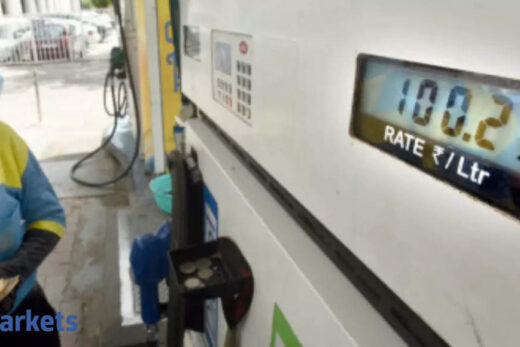About 45% of India’s crude steel comes from secondary makers. Several companies were forced to shut shop due to the high cost of inputs and lesser access to export markets.
“There are around 120 sponge iron, billet ingot manufacturers and rollers in West Bengal that have reduced production by 15-50 % and laid off workers, and about 10 units shut down completely in and around Durgapur, Barjora, Mejia and Asansol,” said Vivek Adukia, Chairman, Steel Rerolling Mills Association of India.
Exports of iron pellets to China and other countries have contributed to this.
“The secondary steel sector is still suffering. Iron ore prices have gone up, and even for Rs 9,000 to Rs 10,000 per tonne, iron ore is not available. Most secondary steelmakers in Jalna in Maharashtra and even in Ludhiana have closed completely,” JSW Steel’s joint managing director Seshagiri Rao told ET last week.
As per industry sources, almost 50-55% of the secondary steelmakers manufacture long products such as TMT Bars, which are not exported at a greater quantity. As of the end of July, Flat product prices were at around Rs 64,000 to Rs 65,000 a tonne whereas long products were in the range of Rs 45,000 to Rs 50,000 a tonne.
“Integrated steel plants operated at 84% capacity utilisation in Q1 of FY 22, and secondary players at around 60-70%. This difference will clearly get reflected in the economy,” JSW’s Rao said.
Secondary steelmakers are losing out on margins due to high input prices
“Input raw material prices like pellets and pig iron are very high. There is a 300-400% increase in raw material prices. Pellet prices were Rs 5,000 to Rs 6,000 a tonne last year; now they are around Rs 15,000 a tonne. Coal prices have also gone up 40%,” said Vijay Jhanwar, executive committee member of Chhattisgarh Sponge Iron Manufacturers Association.
However, finished steel prices have not gone up that much. Billet prices are around Rs 42,000 and TMT is around Rs 45,000 to 47,000, translating into an increase of around 8-10%, Jhanwar said
MSME secondary steelmakers used to have a margin of 8-10% in their Ebitda per tonne, and on average had an Ebitda margin of Rs 4,000- Rs 5,000 a tonne, however, the margins have shrunk or gone in negative for the steelmakers.
“Several players have lost both export and even domestic orders,” Jhanwar said.
While iron ore prices have been going up since May of 2020, secondary makers were clearing old stocks. They need to start the cycle again but input prices are too high.
Some industrialists say that this could be a temporary shutdown and the companies might bounce back sooner.
“MSME steelmakers are definitely at a huge loss, but most of the secondary players are EAFs (Electric Arc Furnaces) so they can shut down and open up easily. As and when iron ore prices stabilize they will get back,” said a top executive from a secondary steel company.
“One of the main issues for the secondary steelmakers was input price and another issue like labour migration…but this is a temporary issue and we have also informed the government about this,” said Bhaskar Chatterjee, secretary-general, Indian Steel Association.
Secondary steelmakers have sought 30%-40% duty on pellet exports, which now attract no levy.
“Captive mine owners shall be directed to sell 25% of their mining plan capacity…kindly impose a 40% export duty on iron ore pellet to be implemented immediately to save the secondary steelmakers,” said West Bengal Iron and Steel Manufacturers Welfare Association in a letter to the Prime Minister’s Office (PMO).



